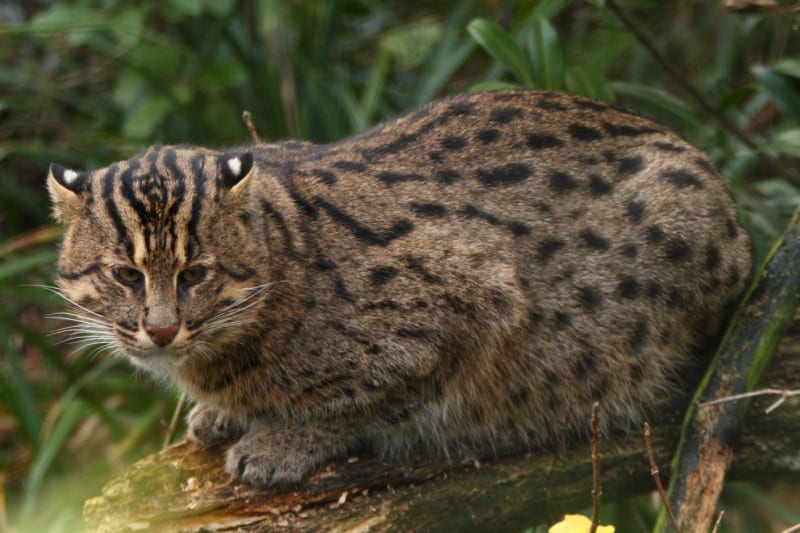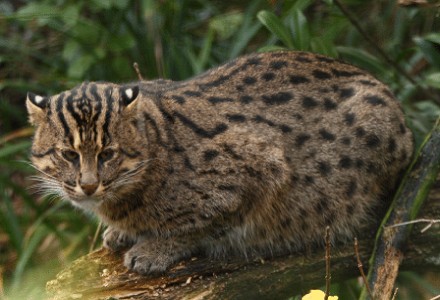
Fishing Cat Facts
- The Fishing Cat serves as the common name for this species of animal. It remains a medium-sized wildcat, endemic to South Asia and Southeast Asia.
- Over the course of the last decade, its numbers dwindled dramatically, however. As a result, in 2008 the IUCN classified the Fishing Cat as Endangered, as a result.
- The principal reason for its decline remains habitat loss. The majority of its natural habitat has been converted to human use.
- Thankfully, the gorgeous small mammal now constitutes a protected species in most countries within its natural range.
- Also, in some regions, its remaining habitat is being preserved, and captive breeding programs also now exist.
Related Articles
Borneo Bay Cat Kodkod Asian Golden Cat
Fishing Cat Physical Description
Most notably, the Fishing Cat possesses a stocky, muscular build. Its legs stay comparatively short, and the fur grows coarse in texture.
Its natural coloring typically presents an olive gray, and it also displays a series of dark spots on its coat. These are also arranged in horizontal streaks along the entire length of the body.
The underbelly typically shows white, and the ears develop a deep black on the back. A mature Fishing Cat attains a head and body length of as much as 31 in (78 cm).
The tail also averages about 11.8 in (30 cm) in length. A large adult sometimes weighs as much as 35 lb (16 kg).
- Kingdom: Animalia
- Phylum: Chordata
- Class: Mammalia
- Order: Carnivora
- Family: Felidae
- Genus: Prionailurus
- Species: P. viverrinus
Photographer: Cliff
CC License: https://bit.ly/3s52QXd
Fishing Cat Distribution and Habitat
Fishing cat populations now exist only in widely scattered pockets throughout its native range. The majority of its numbers appear in the foothills of the Himalayas, in Nepal and India.
Other large concentrations exist in Sri Lanka and Bangladesh as well. The Fishing Cat also dwells exclusively in wetlands.
Individuals primarily live in marshes, swamps, and mangrove areas. The feline usually inhabits the area surrounding faster waterways only if necessary.
It typically prefers to inhabit both evergreen and tropical dry forests, provided they contain the proper, specific habitat type.
Fishing Cat Behavior and Ecology
The Fishing Cat derives its name from the fact that fish constitute its primary prey. Yet the mammal also consumes insects, reptiles, birds, and small rodents, and even carrion when available.
It also forms a solitary species, usually congregating only to mate and remains principally nocturnal in nature. Unlike most felines, however, it seems quite comfortable in the water.
Researchers also note that the Fishing Cat sometimes swims great distances underwater in pursuit of prey.
Typically, however, it hunts the prey from along the bank. Individuals will not hesitate to dive in after a fish if necessary, however.
Species Sharing Its Range
Check out our other articles on Margay, Andean Mountain Cat, Marbled Cat, 7 Truly Breathtaking Mammals

